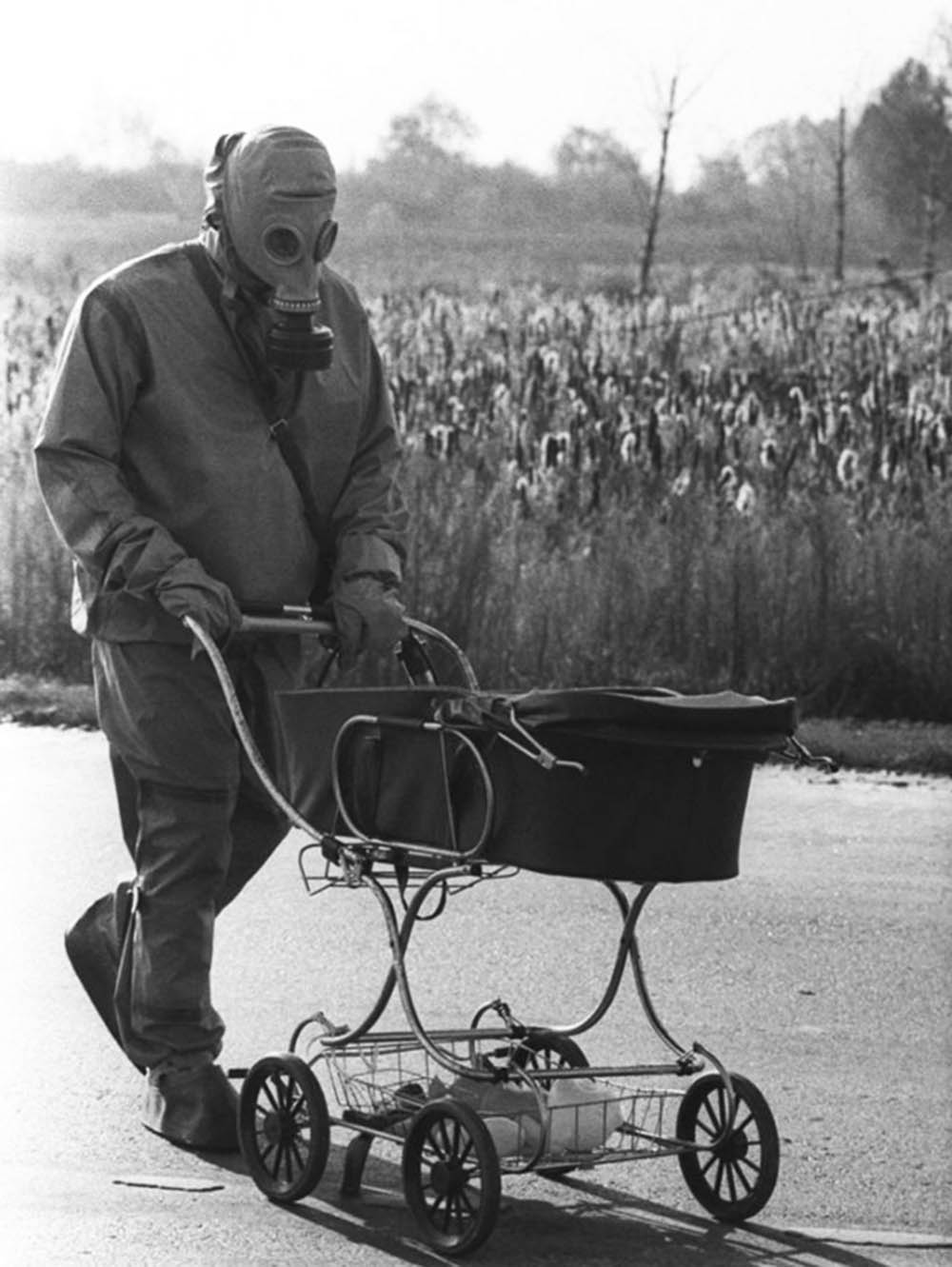Initially, authorities tried to use robots to do the job of removing the dangerous debris, but after a few days, the high levels of radiation damaged the electronic circuitry of the machines. The dangerous nuclear cleanup job fell to what the government of the former Soviet Union called: the liquidators — a corps of soldiers, firefighters, miners, and volunteers. The word “liquidator” is derived from the Russian verb “likvidator” ( which means “to eliminate”). Soon after the explosion, it became clear that the consequences of the accident could not be “eliminated” but only “reduced” however the title was already in common use by this point. At the peak of the cleanup, an estimated 600,000 workers were involved in tasks such as cleaning up the debris from around the reactor, water filtration systems, decontamination, destruction and burial of contaminated buildings, and the “sarcophagus” that entombs the rubble of Chernobyl reactor number four. The International Atomic Energy Agency (IAEA) says some 350,000 of the liquidators in the initial plant cleanup received average total body radiation doses of 100 millisieverts. That’s a dose equal to about 1,000 chest x-rays and about five times the maximum dose permitted for workers in nuclear facilities. The Soviets did not have adequate protective uniforms, so those enlisted to enter highly radioactive areas cobbled together their own shields. The health toll for the survivors continues to be a matter of debate. One advocacy group, says 90,000 of the 200,000 surviving liquidators have major long-term health problems. After the explosion, the facility was covered in pieces of highly contaminated graphite, the substance that had been used instead of water to cool the reactor and slow the fission reaction in the Chernobyl plant design. Chernobyl, like many commercial reactors at the time, used graphite as a coolant, not water. Graphite is often used in reactors as a neutron moderator, which is very different from a coolant. In the case of Chernobyl’s reactors and all other RBMK-1 reactors, graphite was used at the tip of the control rods that modulated (controlled) the functioning of the reactor. These graphite-tipped control rods contributed directly to the disaster – the accident occurred when the control rods were all fully lifted out of the reactor core. When the reactor ran out of control and the reactor operators dropped the control rods back into place to slow down the reactor (they were dropped using only gravity, another design flaw), the graphite tips caught fire and melted from the intense heat, making it impossible for the control rods to be inserted any further, and thereby allowing the reactor to go critical and meltdown. (Photo credit: Russian Public Archives). Notify me of new posts by email.
Δ Subscribe
